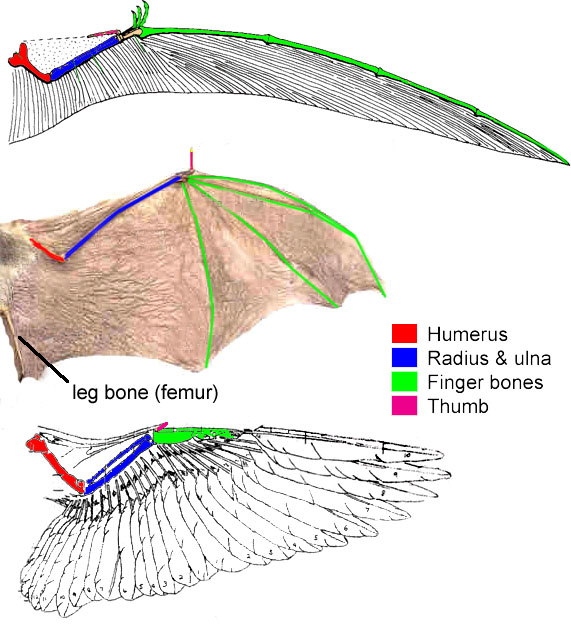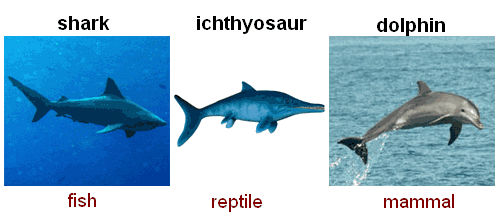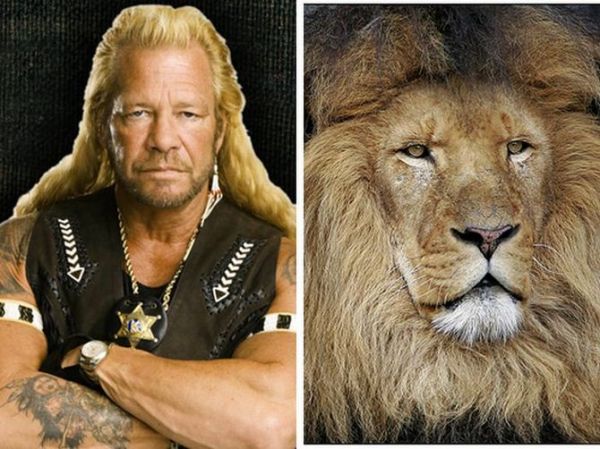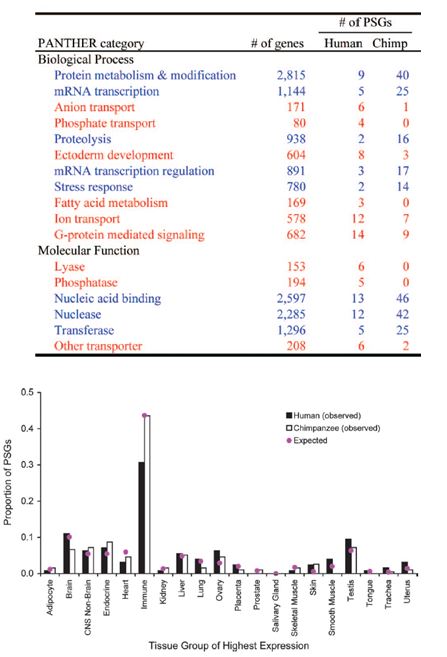In our man-made world, it can feel like everything is converging all at once. Indistinguishable glass skyscrapers sprout up in cities all over the globe, near identical car models vent carbon dioxide into the air on different continents, and people around the world see their waistbands expand as they gulp down the same McFood. Global economies are more connected than ever, with natural disasters in Japan, sovereign debt issues in Europe, and rumors of Wall Street misdeeds shaking worldwide markets within minutes. Even the social media that deluge us with information seem like they’re growing more and more alike, as we now drown in unending streams of look-alike feeds, postings, messages and links from Twitter, Facebook, Google+ and others.
You may wonder whether the forces of convergence are a recent phenomenon, a product of human technology, or whether they may have deeper roots in the natural world. In fact, convergence can and does occur in the realm of biological evolution, albeit at a more comfortable pace. For example, “convergent evolution” occurs when different species independently evolve similar solutions to comparable evolutionary pressures. A classic example of this is the development of wings and the ability to fly by birds, bats and pterosaurs:

Diagram of wing morphology and/or and comparative network hub structure of Twitter, Facebook and Google+ (image credit: National Center for Science Education)
Consider also the independent evolution of sleek, torpedo-shaped bodies by fish, cetaceans and ichthyosaurs:
Closer to home, scientists at the Max Planck Institute for Evolutionary Anthropology have concluded that we may be undergoing a process of cognitive convergent evolution with dogs based on our social relationships over thousands of years with these “best friends” of ours. In a paper published in Trends in Cognitive Sciences, Brian Hare and Michael Tomasello reviewed a large number of studies focused on canine, human, and non-human primate social and communicative skills and reached some interesting conclusions.
They began their analysis by focusing on research showing how well domestic dogs do at interpreting human social and communicative behavior. For example, dogs excel at tests in which experimenters hide food in one of several opaque containers and then signal where it has been hidden by pointing, gazing, bowing or nodding, or placing markers in front of the target location. The dogs easily interpret this type of cue, passing tests such as these on the first attempt and performing correctly even when humans try to trick them by walking towards the wrong container while pointing in the opposite direction to the correct container.
Also, studies have shown that dogs are aware of what humans can see. For instance, if a human turns around during a game of fetch, the dog will almost invariably bring the ball back around the human and drop the ball in front of his face. Similarly, dogs have shown that they prefer to beg for food from humans whose eyes are visible than from ones whose eyes are covered with a blindfold or bucket, but are more likely to approach forbidden food when a human’s eyes are closed.
Indeed, dogs actually consistently outperform chimpanzees and other primates at these types of skills, even though, in areas of non-social cognitive performance, dogs do not do so well. For example, non-human great apes are much better at making inferences about the location of hidden food based on non-social cues (such as a tilted board that might be tipped up by hidden treats) and at tests that require them to achieve food rewards by, for example, reeling in food attached to strings.
With this in mind, Hare and Tomasello turned to whether domestic dogs’ specialized social skills are likely to be due to convergent cognitive evolution with humans or whether another explanation is more plausible.
First, they considered the possibility that dogs learn to recognize human social cues based on their experiences growing up in human households. They found, however, that studies show that even puppies as young as nine weeks old are adept at solving problems using human pointing and gaze cues, and that puppies raised without much exposure to humans are equally skilled at interpreting these cues.
Then, they considered whether domestic dogs may have simply inherited their social skills based on their common ancestry with wolves, since wolves are, after all, pack hunters who need to be able to follow complex social interactions with other wolves and with prey. However, although wolves are generally equal to or better than domestic dogs at memory tests and tasks involving general problem-solving abilities, wolves (even those raised by humans) are simply unable to match the performance of dogs at spontaneously using human social cues to solve problems.
Next, the researchers sought evidence for the evolution of social skills in dogs through their long-term relationship with humans. They looked at a population of domesticated foxes, where the selection for breeding had been based solely on the tendency of individual foxes to be non-aggressive and fearless around humans. Interestingly, these foxes were just as adept as dogs in using and interpreting human social cues, and far better than a population of control foxes that had been bread randomly with respect to their attitude towards humans.
Based on all of these comparative findings, Hare and Tomasello concluded that the best explanation for dogs’ specialized social skills is that they evolved as a consequence of dogs having been domesticating by humans, representing a case of convergent cognitive evolution. Interestingly, Hare and Tomasello went further and, based on their review of the research on domesticated foxes, concluded that the evolution of specialized social skills in domesticated dogs may actually have been an incidental byproduct of an initial decision to select based solely on nonaggression (as opposed to social intelligence).
Finally, turning to primate evolution, Hare and Tomasello speculated that a similar process may have contributed to differences between human and chimpanzee social skills. Under what they refer to as the “emotional reactivity” hypothesis, they predicted that differences in temperament between humans and other primates may help explain some of humans’ extraordinary social cognitive abilities. They point to studies showing that chimpanzees’ willingness to cooperate with each other can often be limited by lack of social tolerance for one another resulting from fear and/or aggression, and contrast this to a more socially tolerant temperament that may ultimately have enabled our hominid ancestors to develop flexible forms of cooperation and communication. In other words, humans underwent a form of self-domestication leading to greater social abilities, thereby convergently evolving with our canine companions who were undergoing the same process.
I’m not sure I entirely buy the notion that we humans are so exceptionally tolerant, but I have noticed that you’ve started to look a bit like your dog. In a future post, we may look at whether we may also be evolving to be more like members of the cat family:
_____
![]() Hare, B., & Tomasello, M. (2005). Human-like social skills in dogs? Trends in Cognitive Sciences, 9 (9), 439-444 DOI: 10.1016/j.tics.2005.07.003
Hare, B., & Tomasello, M. (2005). Human-like social skills in dogs? Trends in Cognitive Sciences, 9 (9), 439-444 DOI: 10.1016/j.tics.2005.07.003







